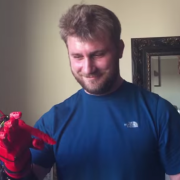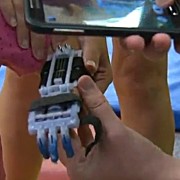Many of you will have seen, and likely been inspired by, the developments of the Robohand project over the course of this year. It has served as a bench mark in many ways, not least in that it has prompted an ever more common occurrence in the world of 3D printing, where people from different walks of life have collaborated to provide something unique, something once unfeasible and cost-prohibitive, for a person in need. Another uplifting story along these lines centres around a little girl in Huntsville, Alabama, who has been the beneficiary and muse for individuals from Zero Point Frontiers attempting to create a workable substitute for the four missing fingers on her left hand. The toddler, Kate Berkholtz can be seen in a local news report playing and tumbling around with her brother in a Huntsville gym for children. She appears quite ambivalent to the fact that she was born without four digits, but Angel Hundley knew she could provide succor for the rambunctious toddler. Angel’s husband, Jason Hundley, is president of the engineering company Zero Point Frontiers and had recently witnessed a presentation from an intern, Shawn Betts, detailing possibilities with 3D printing. Kate’s parents, shunning surgical options, embraced the idea of using 3D printed models and prototypes as substitute digits for their daughter.
Read more →




